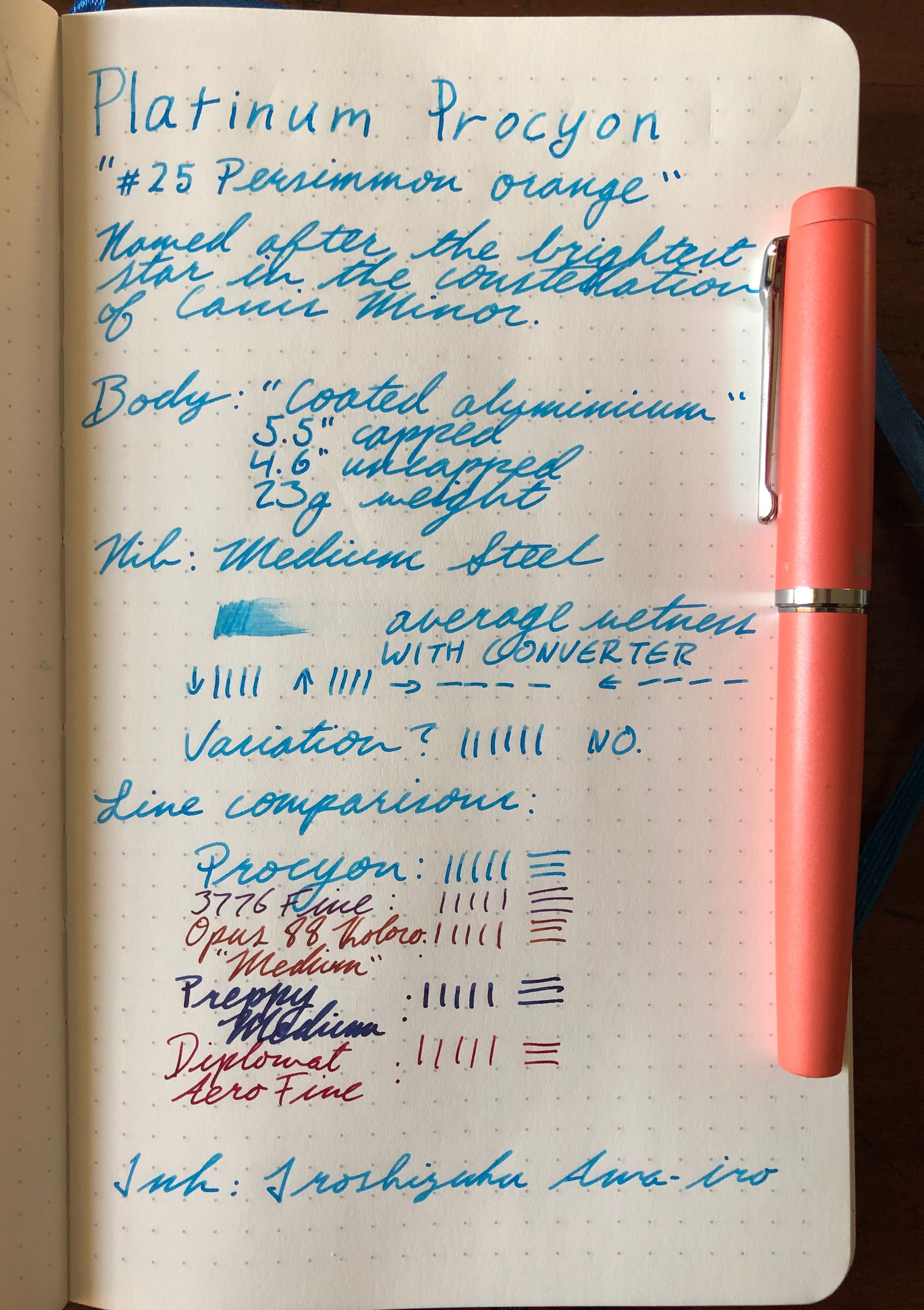Pen Review: Platinum Procyon
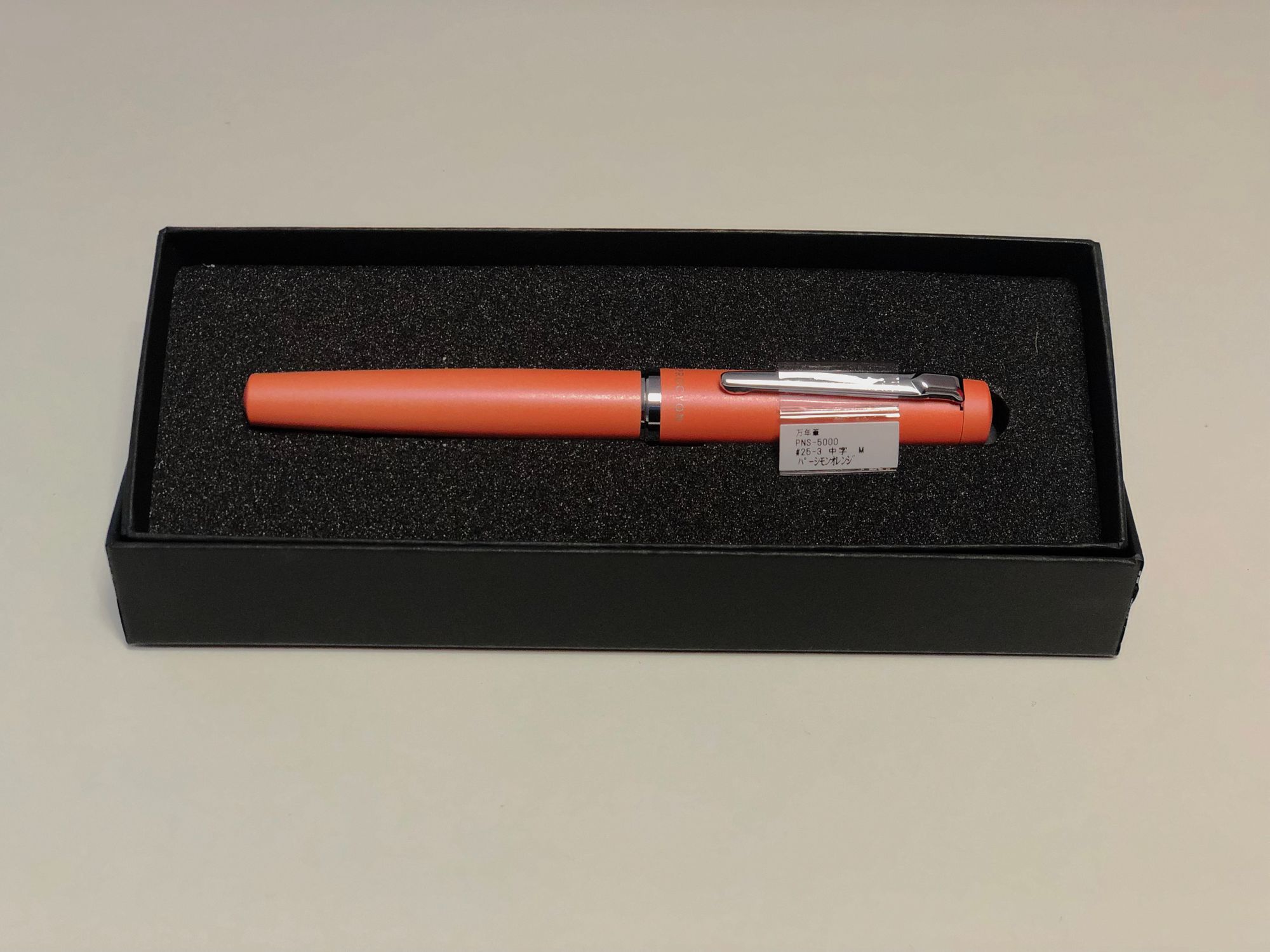
Back at the DC Pen Show, Platinum’s distributor in the US had a new pen to show off: the Platinum Procyon. You couldn’t buy it just yet, but it was there to be seen, and it was a really interesting pen! Bright colors, modern styling, and an aluminum barrel certainly piqued my interest.
A bit later, the pen released, and...nothing. A few retailers made mention that they had received them, I think I saw a video or two, and then silence. I didn’t see any at pen meetups, or around on Instagram. So when Pen Boutique offered one to me at a discount, I jumped at the chance.
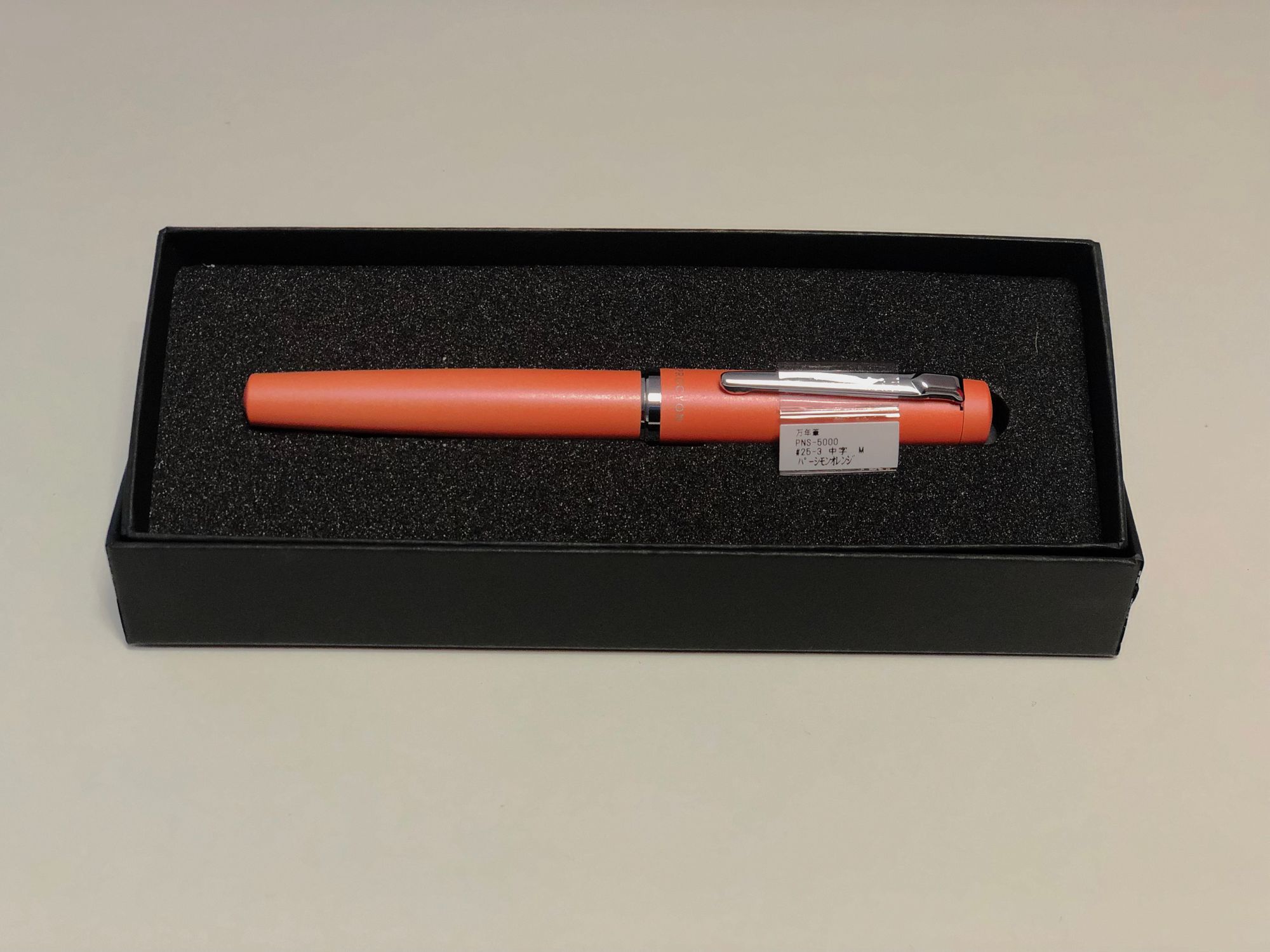
The Body, Cap, and Section
I picked up the Procyon in what Platinum calls “Persimmon Orange”, but what most people who have seen the pen have called “coral or salmon.” It’s an orange-y pink type color, and it’s quite striking in person. Not fluorescent, but still a nice pop of color in a pen case or on a desk.
The body and cap are both aluminum, anodized to the color. The texture reminds me more of a powder coating, and there’s a bit of grit when you hold it in your hand. It’s much rougher than some of my other metal pens, like the Diplomat Aero. I have some concerns about that roughness causing the pen to scratch after heavy use, but I haven’t experienced that yet.
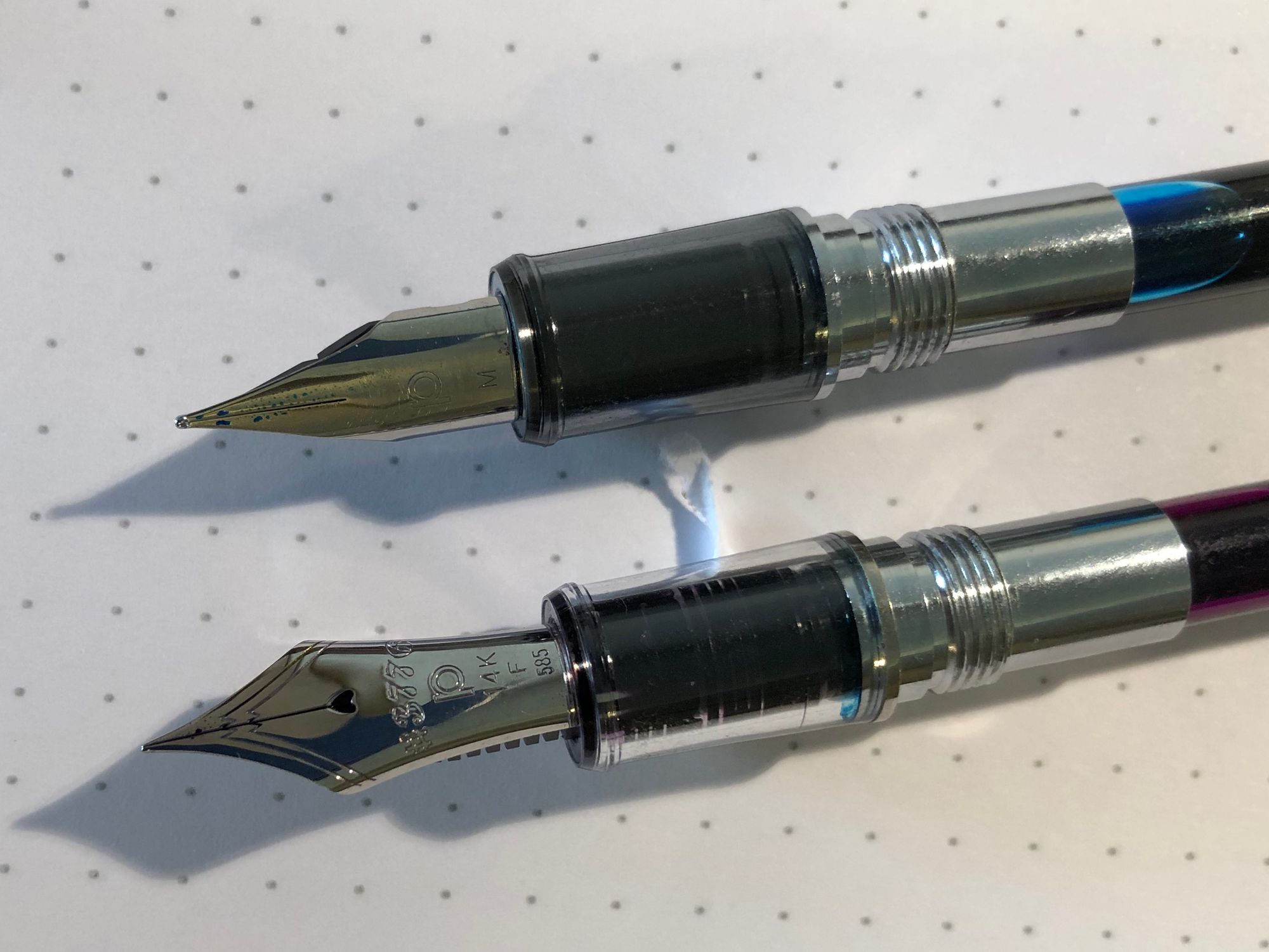
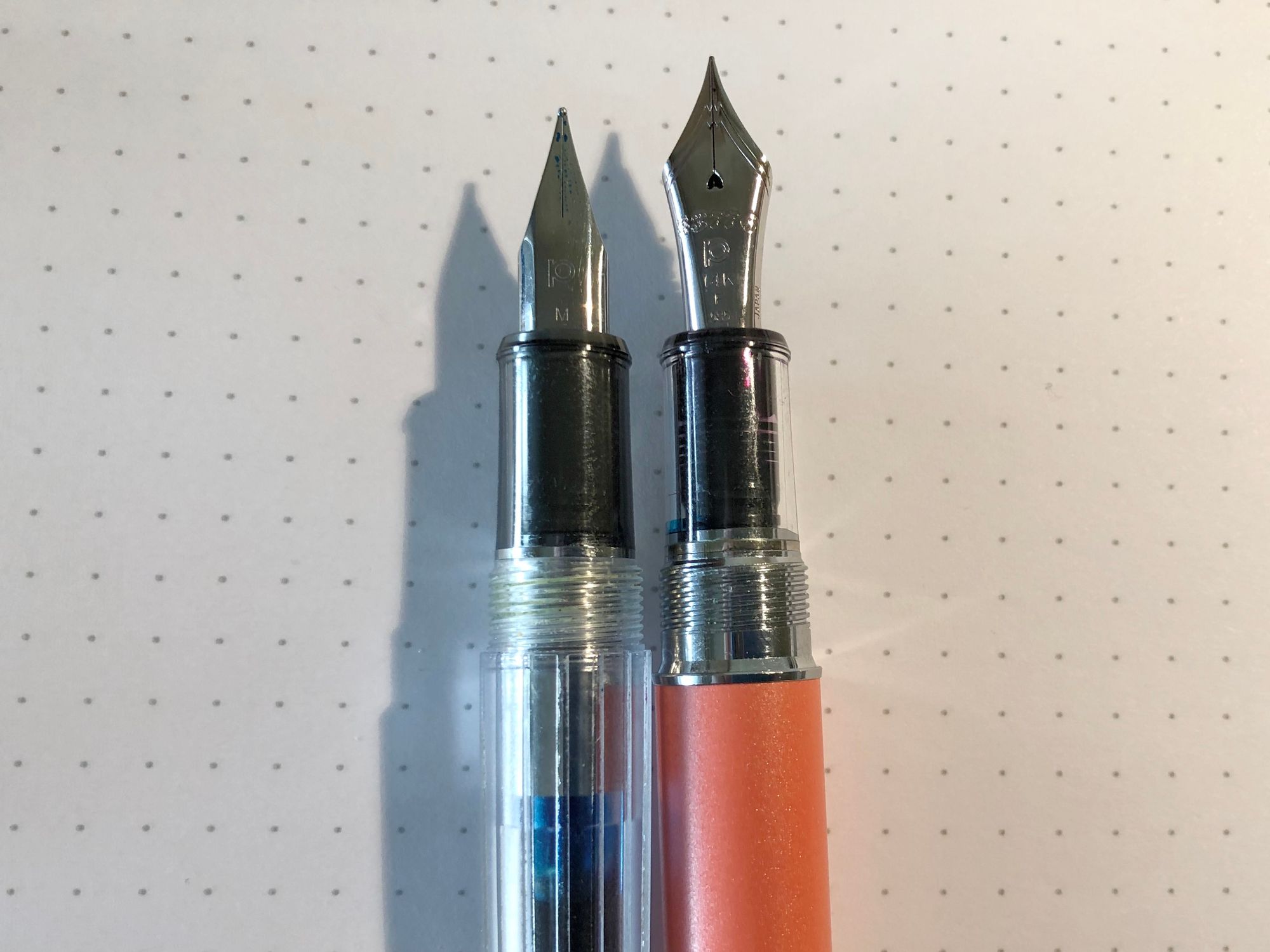
Much like the 3776’s section, you can feel the molding lines along the side, which is an odd thing for Platinum to skimp on. A little more finishing work there would be appreciated, but it’s not something that really bothers me at the Procyon’s price point.
The cap is outstanding. I love the font that Platinum went with for the ‘PROCYON’ that is printed on the cap, and it appears to be in the same powder coat as the rest of the finish. The clip is nice and springy, with something that appears to be a sort of chevron on the top of the cap. It’s a neat design, and unique from anything else I have in my collection. And, most importantly, it uncaps in exactly one turn.
The Nib and Feed
Part of what drew me to the Procyon was Platinum’s choice to use a vintage-styled steel nib. Platinum’s steel nibs are some of the best in the business, and they’re primarily used on the Preppy, so I was interested to see what they could do with a higher price point. And, as expected, they made a great nib.
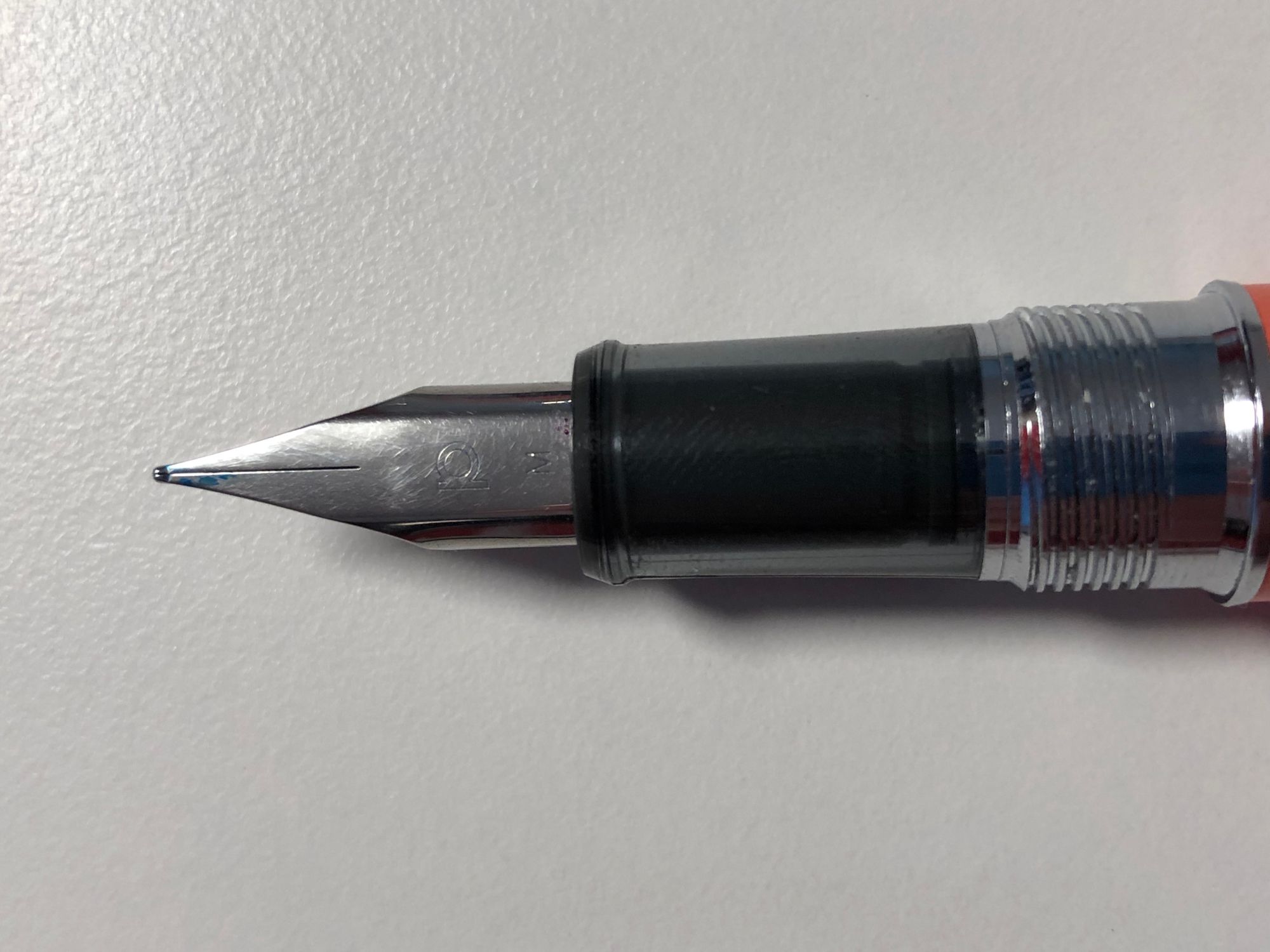
I could tell that this was going to be a nib that I liked out of the box. While I don’t mind a bit of feedback, I’ll confess to being one of those people that prefers a buttery smooth writing experience. The feeling of a smooth nib sliding across a nice, coated paper just feels so great. And this nib delivered on that. It’s a plain, smooth, bouncy nib. I did have to adjust it a little to be wetter, but I don’t think that was necessarily the fault of the nib. More on that in a moment.
Platinum touts the design of their new feed pretty heavily in the marketing material for this pen. They placed the breather hole on the bottom of the plastic feed, further forward and more shallow than many other feeds have it. The idea is that the design will let you get all the way to the bottom of the an ink bottle and get up any last remaining drops in a bottle that’s almost empty. As a serial ink acquirer, I don’t often (okay, ever) find myself in a situation where I’m running low in an ink bottle, but it’s a neat idea nonetheless.
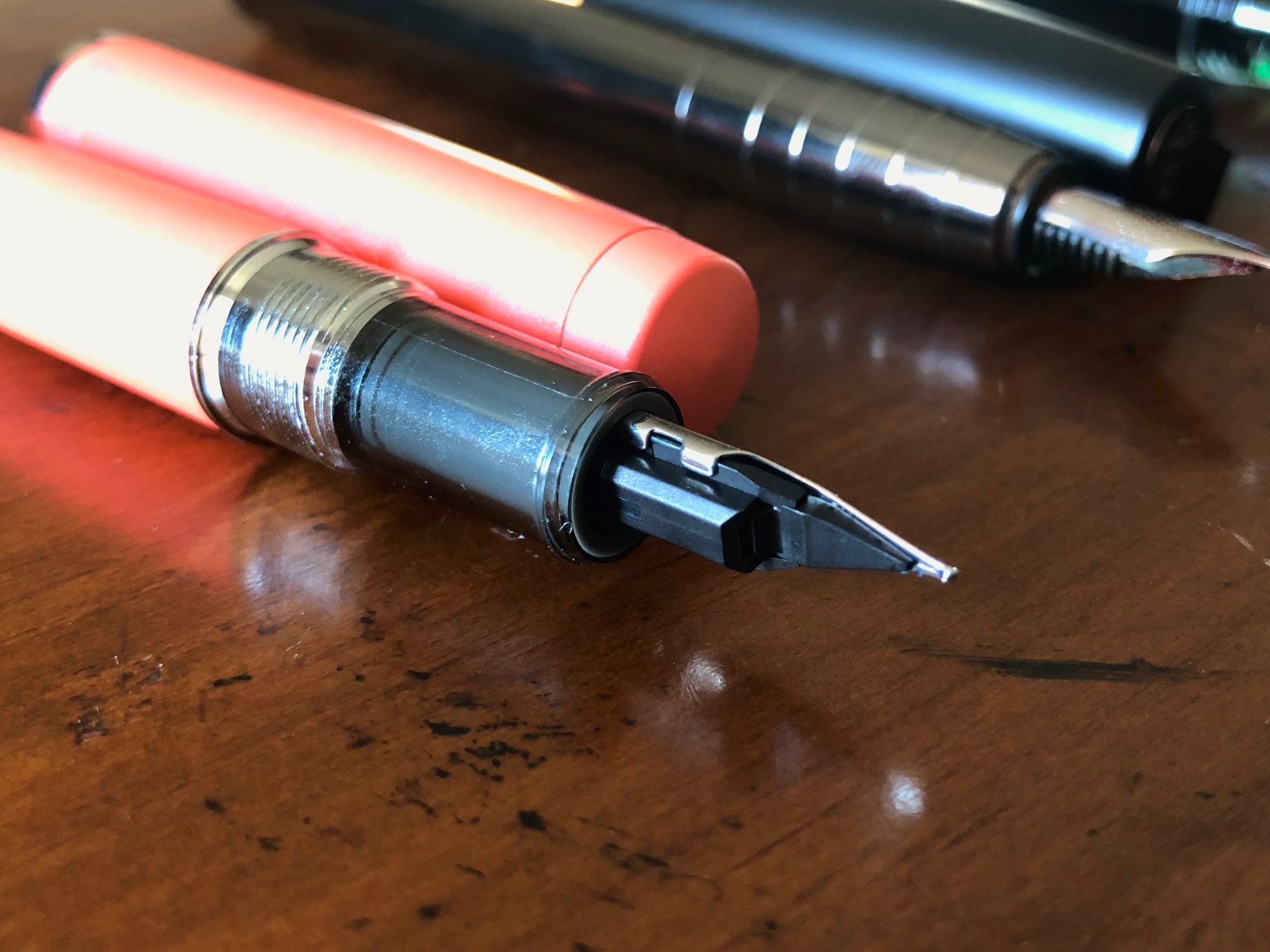
However, Platinum has decided that instead of providing a converter so that you can actually try their touted feature, they’ll instead include three limited edition cartridges made from their Mix Free line of inks for the first run of Procyons. And while I understand the desire for Platinum to save a few dollars on the initial sale, I had nothing but problems with the cartridge. I ran into ink starvation, the nib was brutally dry, and there were even some hard starts. The whole experience was infuriating. Once I picked up a converter, every single problem I had with the flow went away.
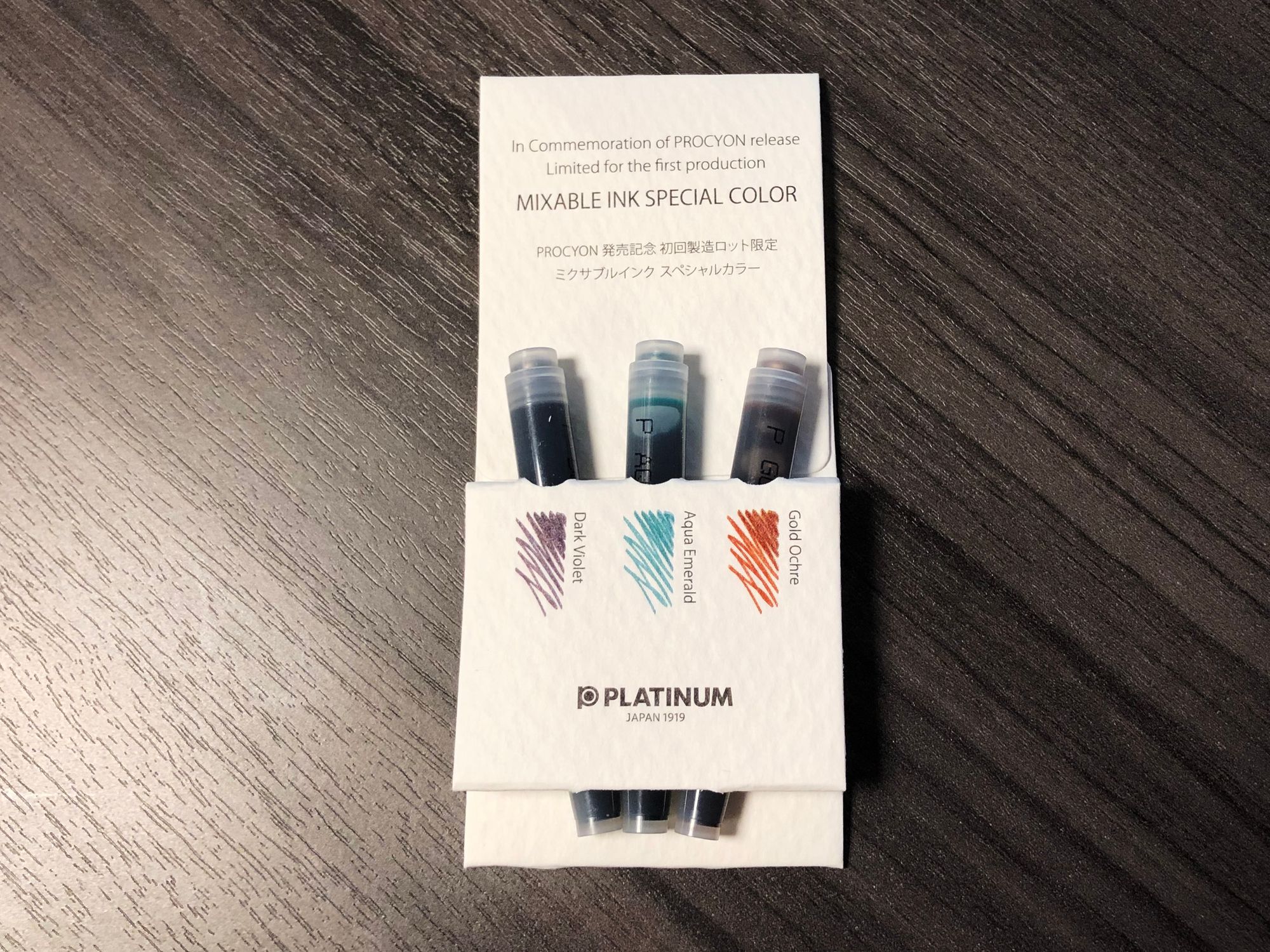
The Price
But that brings us to a discussion about the price. I think the Procyon is suffering from a few different things here in the US. First, it’s an in-between pen in a crowded market. Pen Boutique lists the Procyon at $52.80, which is a reasonable price for a steel nibbed, aluminum pen. That competes with the Faber-Castell Loom, the Caran d’Ache 849, the Pilot Prera, and a bunch of other strong contenders. So the Procyon is too expensive to be a starter pen, but I don’t know that it stands far enough above the others to be an outlier.
Second, Platinum is competing with itself directly and indirectly. At the $65 mark, you can pick up the Platinum PTL-5000 with one of Platinum’s outstanding gold nibs. And on the grey market, the 3776 is available on Amazon for $10-20 more, and it’s a rock solid, outstanding pen. And the slight premium will get you one of the best pens and nibs on the market, in my opinion.
And I still don’t care for the decision to not include a converter in the box. I get it, it’s an easy upsell, but it feels like if Platinum is going to lean so heavily on the filling mechanism, why not actually provide the tools to let their customers use that feature without charging more for the privilege? At the same time, most other manufacturers in the same price range charge for their converter as well, so perhaps that’s just my own hang up.
The Conclusion
So, where does that leave the Platinum Procyon? Well, it’s complicated.
Mechanically, it’s a great pen. I love the styling of it, and I love to see a company taking some risks on a more modern looking pen. The barrel feels great, and, with a bit of tuning, the nib is really enjoyable to write with.
On the other hand, I shouldn’t have to tune a nib, even for wetness, especially when I’m paying $50 for a pen. While I liked the idea behind some unique colors of ink to reward those who bought the pen on the first run, I had nothing but problems with the cartridges included in the box. And, I still have to weigh this pen against the other products available in the same general price range, like Platinum’s own 3776.
If the design and colors appeal to you, and you want a solid, steel nibbed pen as a step up from some of the starter pens, then the Platinum Procyon is a great choice. Just know that you’ll certainly want to buy a converter, and that you do have other options in the price range. I’ll certainly be keeping mine, and I’m really interested to see what Platinum continues to innovate on in this line in the future.
This pen was provided to me at a discount by Pen Boutique. I was not compensated in any other way for this review, and my opinions are my own.
